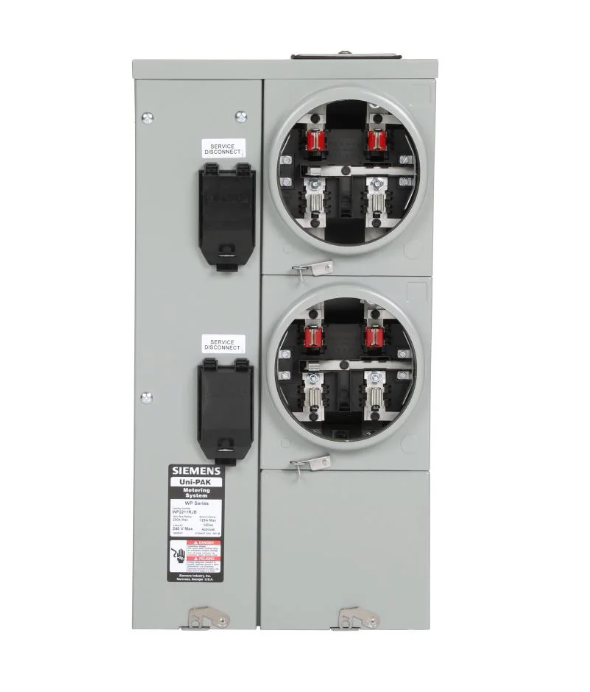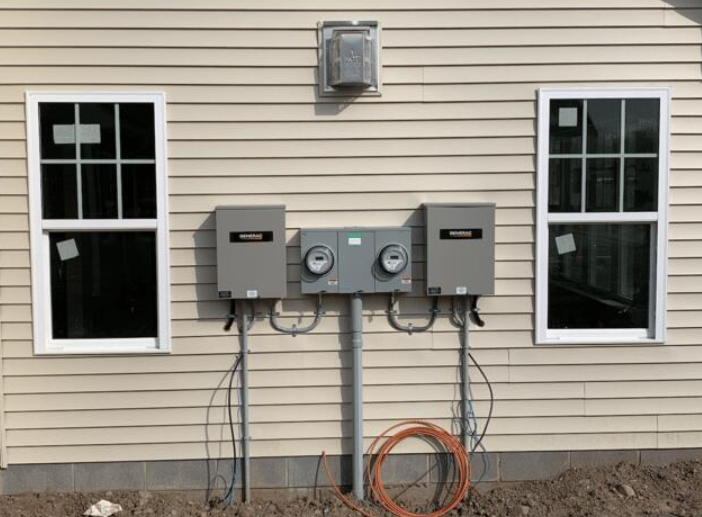Thinking of adding an Accessory Dwelling Unit (ADU) to your property in San Diego? Understanding what San Diego Gas & Electric SDG&E ADU requirements is key to avoiding costly delays or upgrades. This guide explains everything you need to know—from electric meters to service panels and solar requirements.
🏡 What Is an ADU?
An Accessory Dwelling Unit (ADU) is a secondary housing unit built on the same lot as a primary residence. Whether it’s a backyard cottage, garage conversion, or a unit over a garage, ADUs are a great way to add rental income or housing for family members. In San Diego, utility connections—especially electric—are a major part of the construction process.
🔌 SDG&E ADU Requirements at a Glance
- A dedicated electric meter may be required for your ADU.
- Upgrades to your main service panel may be necessary.
- ADUs often need 100–200 amps of electrical capacity.
- Trenching may be required for new conduit to the ADU.
- SDG&E permits and inspections are mandatory.
- In some cases, Time-of-Use (TOU) meters are installed for ADUs.
- Smart meters and solar-ready planning may be applicable.
🔧 Step 1: Does Your ADU Need a Separate Electric Meter?
According to SDG&E’s current guidelines, most new ADUs require a separate meter, particularly if they are detached or designed for rental. However, SDG&E allows shared service from the main home panel under certain conditions—such as for a junior ADU or one built solely for family use.

⚠️ Step 2: Check Your Electrical Service Panel
Do You Have Enough Amps?
Your existing panel may only offer 100 or 125 amps, which might be insufficient once you add HVAC, laundry, and appliances for the ADU. A typical ADU requires 100–200 amps, depending on:
- Size of the ADU
- Electric range or HVAC systems
- Water heater (tankless uses more amps)
- EV charging provisions
If your panel doesn’t have enough capacity, SDG&E may require a panel upgrade and new service drop, which could cost $3,000–$10,000+.
🏗️ Step 3: Submitting to SDG&E
Before trenching or running wires, your electrician or contractor must submit plans to SDG&E for review. This includes:
- Electrical load calculations
- Site plan showing meter placement
- Trenching path and conduit detail
- Load Letter (Form 142-02700)
Download: SDG&E Load Letter (PDF)
SDG&E typically responds within 10–15 business days, but timelines can vary depending on project complexity.
🚜 Step 4: Trenching & Conduit Requirements
Once approved, SDG&E requires conduit to be installed at specific depths:
- 24″ minimum depth for residential electric conduit
- Use gray Schedule 40 PVC
- Pull rope must be included
- Conduit size varies, often 2” for 200 amp service
Trenching may go from your main service point to the ADU location or to a street-facing SDG&E transformer or pole.
🧾 Step 5: SDG&E ADU Meter & Service Panel Installation
Left column: Tasks for Electrician
- Install sub-panel or meter pedestal
- Grounding and bonding per code
- Ensure main panel backfeed protection
Right column: SDG&E’s Role
- Inspection of service gear
- Set the new electric meter
- Final energization

🌞 What About Solar?
California’s Title 24 energy code may require your new ADU to be solar-ready—especially if it’s detached and over 400 sq ft. You don’t necessarily need to install panels, but conduit and panel space should be provided.
If you’re planning solar, SDG&E offers Net Energy Metering (NEM) for ADUs, though your eligibility depends on whether the meter is shared or separate.
⏳ SDG&E ADU Timeline & Costs
| Phase | Timeframe | Estimated Cost |
|---|---|---|
| SDG&E Review | 2–3 weeks | Free |
| Trenching & Conduit | 3–7 days | $2,000–$8,000 |
| Panel Upgrade | 1–2 days | $3,000–$10,000+ |
| Meter Installation | 1–2 days | Included by SDG&E |
Note: Costs vary based on panel location, distance, load size, and permitting.
✅ Pro Tips for Smooth Approval
- Hire a licensed electrician with SDG&E experience
- Submit your load letter and plans early
- Clearly label panels and breakers
- Make the meter location accessible (not behind fences)
- Call 811 before trenching to avoid utility conflicts
📞 SDG&E ADU Contact Info
For service planning questions, call SDG&E’s New Service Department at:
📞 1-800-411-7343
📧 serviceconnections@sdge.com
Or visit: https://www.sdge.com/
📋 Conclusion
Building an ADU in San Diego is a smart move—but don’t overlook your utility responsibilities. SDG&E plays a crucial role in approving your electric connection. With proper planning, your ADU will be safe, efficient, and compliant. The good new is we have experience navigating this complex issue. If you need help or want to discuss your project further, contact us or call (858) 294-6868. We are happy to provide a free feasibility evaluation and preliminary estimate.
